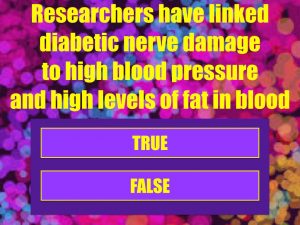“When you have high blood pressure your heart is working overtime, all the time, “says Neva White DNP, CRNP, CDE on October’s Diabetes Late NIte podcast. “Measuring your blood pressure is one of the best non invasive tests that we have available to give us a window into how well the heart is actually functioning.”
The American Heart Association recommends home monitoring for all people with high blood pressure to help the healthcare provider determine whether treatments are working. Home monitoring (self-measured blood pressure) is not a substitute for regular visits to your physician.
How to use a home blood pressure monitor
Be still. Don’t smoke, drink caffeinated beverages or exercise within 30 minutes before measuring your blood pressure. Empty your bladder and ensure at least 5 minutes of quiet rest before measurements.
Sit correctly. Sit with your back straight and supported (on a dining chair, rather than a sofa). Your feet should be flat on the floor and your legs should not be crossed. Your arm should be supported on a flat surface (such as a table) with the upper arm at heart level. Make sure the bottom of the cuff is placed directly above the bend of the elbow. Check your monitor’s instructions for an illustration or have your healthcare provider show you how.
Measure at the same time every day. It’s important to take the readings at the same time each day, such as morning and evening. It is best to take the readings daily however ideally beginning 2 weeks after a change in treatment and during the week before your next appointment.
Take multiple readings and record the results. Each time you measure, take two or three readings one minute apart and record the results using a printable (PDF) or online tracker. If your monitor has built-in memory to store your readings, take it with you to your appointments. Some monitors may also allow you to upload your readings to a secure website after you register your profile.
Don’t take the measurement over clothes.

Why keep a blood pressure journal?
One blood pressure measurement only tells what your blood pressure is at that moment. A diary of multiple readings taken over time provides a better picture of your blood pressure that can help you partner with your physician to ensure that your treatments to lower high blood pressure (HBP or hypertension) are working.
If you have been prescribed medication to lower your blood pressure, don’t stop taking your medication without consulting your doctor, even if your blood pressure readings are in the normal range during home monitoring.



